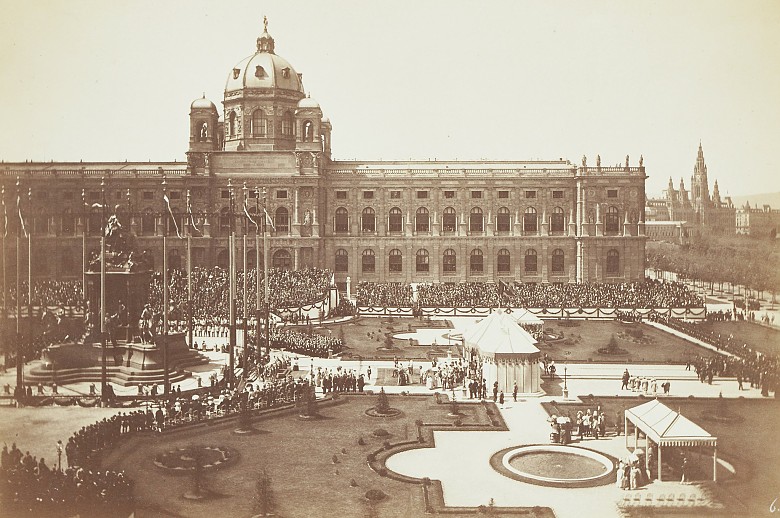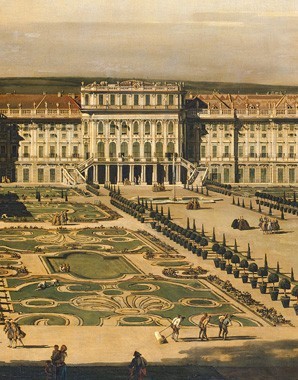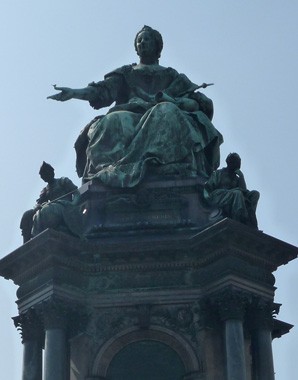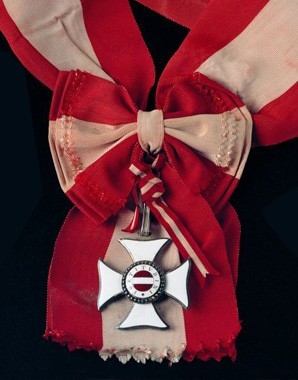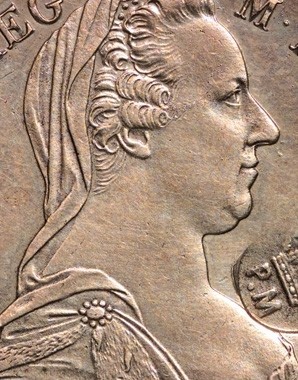Maria Theresa as the Habsburg ‘Übermutter’: traces of a life
Maria Theresa made a virtue of the initial disadvantage of her sex, presenting herself to the outside world as the great ‘mother of her nation’. Popular accounts of her reign still resort to this image of the feisty monarch who with maternal common sense ruled her dominions like a large family.
Maria Theresa remained the only female ruler in Habsburg history – and she left her mark: under her rule the Monarchy underwent a modernization push which led to a golden age for Austria that manifested itself in political stabilization and a flourishing of the arts.
Maria Theresa is often portrayed as the matriarchal ‘Übermutter’ of the Habsburgs. The way she is remembered has been marked by a tendency to mythologize her achievements and person. The frequently uncritical idealization of her personality and actions has led to her being seen as the great mother of her country, a perfect embodiment of prototypical monarchical and female virtues. The foundations of this myth were laid during her own lifetime: Maria Theresa commissioned a decorative programme for Schönbrunn that was intended to celebrate the great moments of her reign and the launching of the new dynasty.
Schönbrunn can justifiably be called her life’s work. The famous palatial complex clearly bears Maria Theresa’s signature, as she was personally involved in her favourite project – not always to its advantage. The empress was an impatient patron, wanting to see her grandiose ideas translated into concrete form as swiftly and yet as inexpensively as possible. Constructed in several stages over a period of time, the palace and its park were transformed into a medium for representing the majesty and wealth of the dynasty.
Numerous monuments were erected to the great empress after her death, attesting to the elevation of Maria Theresa to the status of the most popular ruler of the Habsburg Monarchy by the patriotic historiography of the nineteenth century, which still continues to exert a partial influence today. Perhaps the most famous example is the imposing monument between the two court museums on the eponymous Maria-Theresienplatz in Vienna which portrays the monarch surrounded by her advisors. It was the largest and most expensive monument to be erected on the Ringstrasse boulevard.
Numerous streets, squares and even whole towns throughout the territories of the Monarchy were named after Maria Theresa. A number of important institutions also bore her name, including the Maria Theresa Military Academy in Wiener Neustadt, the elite training centre of the Austrian army founded in 1752. Another example is the Theresianum, once the summer residence of Maria Theresa’s father and known as the New Favorita, which the empress gave to the Jesuits in 1746 so that they could establish the Theresianische Ritterakademie, an educational institution for aristocratic offspring out of which developed today’s private secondary boarding school and the Diplomatic Academy.
The monarch’s name is also perpetuated in the highest military order of merit in the Habsburg Monarchy: she established the Order of Maria Theresa in 1757 to commemorate the Battle of Kolín, at which the Austrian army won a decisive victory over Prussia.
Last but not least, the empress’s features were commemorated on the Maria Theresa Thaler, a silver bullion coin that became used as currency all over the world and was frequently re-minted. As the eponymous image on this coin, which is today a much-sought-after collector’s item, Maria Theresa’s portrait ended up circulating across much of the globe.
